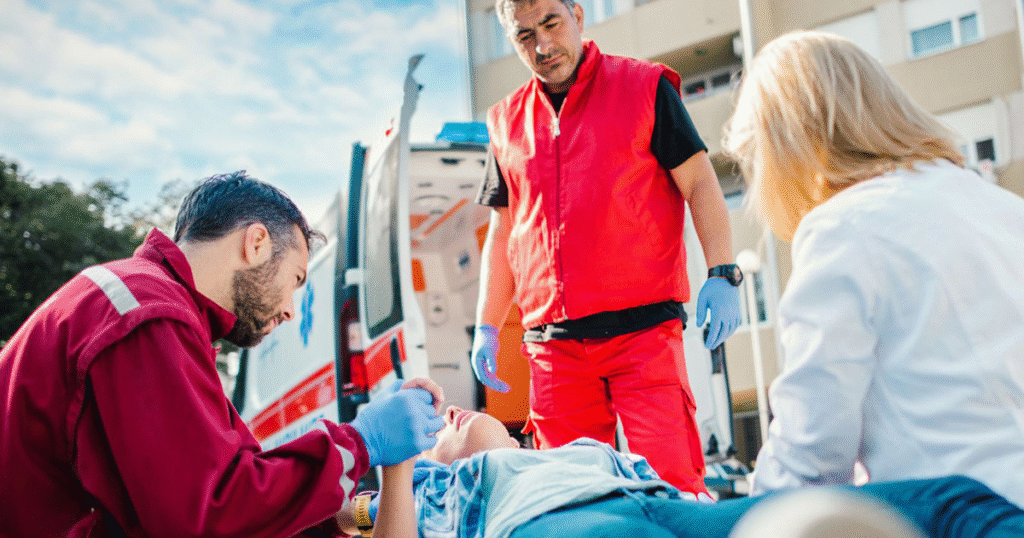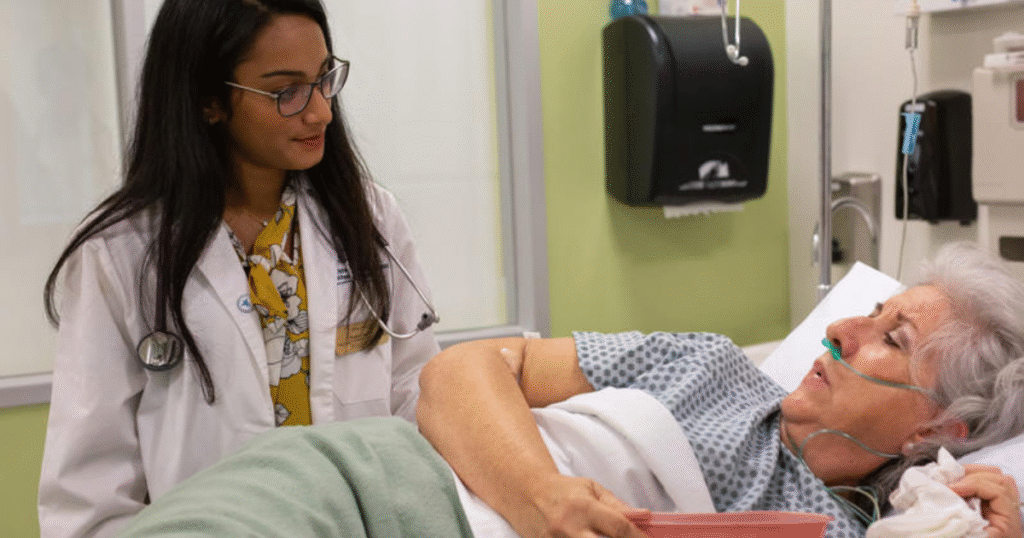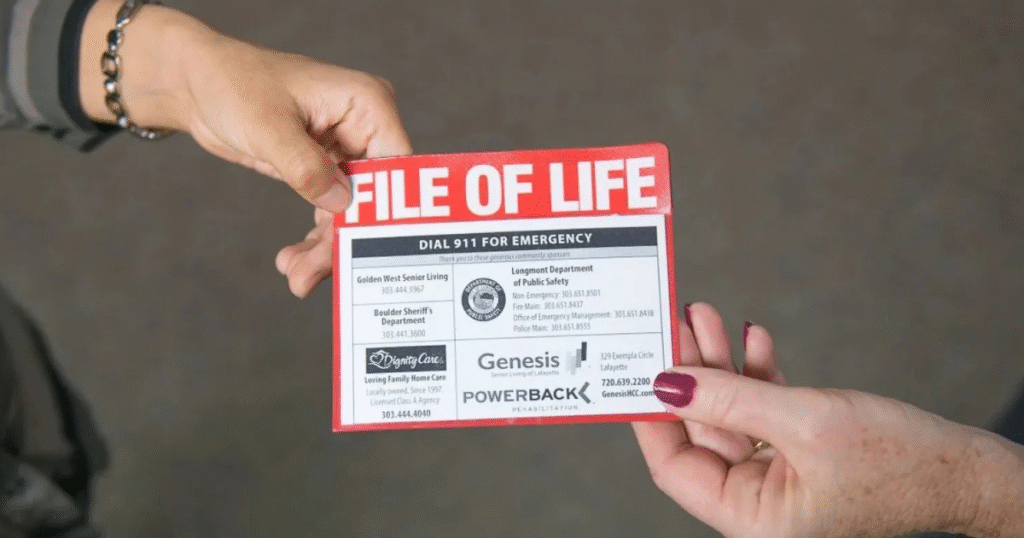Academic emergency medicine (EM) is like none other in that it allows you to combine clinical practice, education, and research. For those who choose to be emergency medicine faculty, you not only treat patients in some of the hardest circumstances in healthcare but also help train the next generation of healthcare professionals. This article will clarify the roles and responsibilities of emergency medicine faculty, the transition to an academic position from residency, the career outcomes of academic emergency medicine, mentorship to others, and faculty development opportunities available in EM.
What Does Academic Life in Emergency Medicine Entail for Faculty Members?
Understanding the Role of an Emergency Medicine Faculty Member
In the academic practice of emergency medicine, faculty members are integral transitional elements between the clinical aspect of medicine and the education aspect. Faculty members educate medical students and residents in the emergency department (ED), and it is the responsibility of the faculty to assure that the the medical students and residents know things that are current and useful. An emergency medicine faculty member may be responsible for developing, revising and coordinating residency training curriculum, which also assesses the current demands of the health care system. Faculty are also involved in scholarly activity and contribute to research that informs emergency medical education and clinical practice and shapes the future of emergency physicians.
Key Responsibilities in Academic Emergency Medicine
Emergency medicine faculty have responsibilities beyond just teaching. Faculty members are encouraged to show academic productivity in the form of research, publications, presentations, and conference participation. Faculty are also essential for the training programs, for example, supervised residents during rotations and clerkships, while also providing a learning environment. Lastly, faculty members should have a number of administrative responsibilities, behind-the-scenes work that includes committee membership, active participation in projects, and collaborating with colleagues in order to improve the educational mission of their respective medical center. Being an emergency medicine faculty member requires dedication to be as good as they can be in their field, but it also requires a commitment to use innovative techniques in education, important for the development of Emergency Medicine practitioners who demonstrate competence.
Balancing Clinical and Educational Duties
For emergency medicine faculty, balancing a clinical load and an educational load will remain very challenging. Faculty often have to juggle shifts in the emergency department while preparing lectures and fully engaging students. Balancing these two roles, time management skills, and prioritizing tasks is paramount. Faculty in emergency medicine also have to stay on top of their own professional development and be active in finding opportunities to improve their teaching and clinical knowledge. By integrating their clinical work into their academic lifestyle, emergency medicine faculty maximize the learning experience for medical students and also ensure that they are aware of any emerging innovations in medicine.

How to Transition from Residency to an Academic Position in Emergency Medicine?
Steps to Move from Residency to Faculty Role
As a resident moves from residency to an academic position in emergency medicine, there are some steps to consider in order to optimize the transition. In the early years of training, it is imperative that residents take the plunge into the culture of academia by creating opportunities to teach and engage with the mentored experience. Conducting research projects can also be included in a resident’s CV to demonstrate the commitment to working in academics. In addition, residents should engage with faculty and find mentors who are already in an academic position and can help them navigate the employment sector. Faculty meetings and academic conferences can improve a resident’s visibility and hopefully they can connect with employment opportunities. Ultimately, the goal is to get hired so, the more exposure the resident has to those making hiring decisions, the better.
Preparing for the Academic Job Market
Preparing for the academic job market in emergency medicine involves a comprehensive approach. As residents ready themselves for academia, their portfolio needs to reflect their academic accomplishments, clinical skills, and teaching experiences. A physician’s CV should be tailored to highlight academic productivity—specifically relevant publications and presentations. Academic institutions (such as Stanford University, and prestigious university medical centers) can differ, so having knowledge of institutional expectations could help, as well as have a mock interview with some feedback from faculty mentors. Mentors might be able to provide ideas of what the entire application process might entail and what would improve their interview skills.
Importance of Networking and Mentorship
Networking and mentorship are key pieces of transitioning successfully from residency to an academic post in emergency medicine. If you can establish a connection with established emergency medicine faculty, you can gain valuable mentorship, and connections for advice, support, or potential hires. Networking with others in your field by getting involved in professional organizations and academic societies also has additional benefits and possibilities by fostering connections not only with peers but with leaders in the field, and professional engagement opportunities are likely to lead to other networking prospects. In addition to those benefits, mentorship relationships can provide you with professional and/or personal advice for circumstances that only you will encounter. Mentorship relationships might help you sort through some of the complexity of academic life, and help you adapt to your new role and responsibilities as a faculty member.
What Are the Outcomes of a Career in Academic Emergency Medicine?
Evaluating Career Development Opportunities
A career in academic emergency medicine can lead to rewarding and diverse possibilities. Faculty members have the opportunity to take advantage of substantial career opportunities, faculty development trainings, and teaching and research trainings. Faculty development opportunities connect with career development opportunities, such as academic, research, and teaching; participating in the emergency medicine faculty incubator can further advance one’s career using resources for development and growth as an individual faculty member. These opportunities help the respective faculty member, and the faculty development process helps the educational community in myriad and unknown ways through progress for now and into the future.
Long-Term Impact of Faculty Development Programs
Taking part in faculty development is a lasting change in emergency medicine faculty. Faculty development programs focus improving skills in the classroom, stimulating research opportunities and promoting leadership abilities. Getting involved in faculty development programs, enhances a faculty member’s perceived knowledge and physical documentation of academic productivity, resulting in career promotions and higher academic status in the academic community. Institutions engaged in faculty development see feasibility measures by faculty in becoming engaged faculty, which translates into engaged educators benefiting medical students and residents.
Success Stories from Emergency Medicine Faculty
The above accounts of faculty from emergency medicine demonstrate the vast possibilities in the specialty. Many faculty contribute to medical education, whether in teaching with innovative methods, research accomplishments or in the leadership within their own organizations. These examples can inspire or motivate junior faculty or residents to think about what is possible as a career in academic emergency medicine. These stories also underscore not only the value of academic utility, but also demonstrate the rewarding aspects of a career in emergency medicine.

How to Effectively Mentor Medical Students in Emergency Medicine?
Strategies for Engaging Medical Students During Clerkships
Mentoring medical students during their clerkships is an important and foundational component in the practice of emergency medicine. There are numerous methods to engage students in a meaningful way: interactive case discussions, hands-on teaching during rounds or clinical shift, and encouraging students to lead small group discussions. Encouraging students to ask questions and be part of clinical decision-making builds their self-efficacy and confidence in clinical practice, and it strengthens their learning experience. Engaging with students in a meaningful way can shape students’ impression of emergency medicine as a specialty, as well as their desire to pursue the specialty further.
Creating a Supportive Learning Environment
Having a nurturing learning context is important for mentorship in emergency medicine because it is important that faculty create a learning environment that lets the medical students express themselves and reflect on their thoughts and feelings openly. Faculty can create a supportive environment by being friendly and approachable, giving constructive feedback, and implementing recognition for student’s efforts. Mentors who establish a trusting and professional relationship with their students encourage their students to share things openly. Ultimately, this supports the faculty in better addressing students’ needs and developing/managing their approach to mentoring. A favorable learning context not only improves the educational experience for students but also advocates for the student’s wellbeing and resilience.
Assessing and Providing Feedback to Medical Students
Assessment and feedback are central in medical education, and especially in high stakes areas such as the emergency department. Faculty should use structured assessment tools that may help provide an objective assessment of student performance during the clerkship. In addition, timely feedback is critical to student development. Faculty should strive to give constructive feedback that highlights areas of strength and areas for improvement. One way that faculty might choose to teach students is by establishing an environment of ongoing feedback and self-reflection. Faculty can help develop the future generation of emergency physicians who are competent and confident in their practice.
What Resources Are Available for Faculty Development in Emergency Medicine?
Overview of Faculty Development Programs and Incubator Initiatives
Creating opportunities for faculty development programs is a fundamental aspect of the academic enterprise of emergency medicine faculty. These programs can take many forms, but typically involve workshops, seminars, and other resources aimed at enhancing teaching effectiveness and overall academic productivity. Youth and early career faculty programs such as the emergency medicine faculty incubator help to support their tenure track faculty as they work through the trials, tribulations, and challenges of transitioning into an academic clinician, while also facilitating their development as emergency medicine faculty and knowledge experts. Faculty development programs are important for building a professional development culture of continuous improvement and knowledge development in the academic emergency medicine workspace.
Accessing Educational Materials and Workshops
Emergency medicine faculty have a multitude of educational resources and professional development activities available to enhance their teaching practice and clinical knowledge. There are internal region, schools or institutional resources available at may during emergency medicine conferences, while organizations like ALiEM have essentially every online educational resource imaginable, case studies, and teaching methods made for emergency medicine. These educational resources help faculty stay up to date medical education best practices and ultimately promote their training of competent emergency physicians.

Leveraging Online Platforms like ALiEM
Online platforms, such as ALiEM, have become an incredibly valuable resource for emergency medicine faculty to improve their teaching and clinical skills. Faculty can access an abundance of resources, including articles and podcasts and interactive modules that describe many elements of emergency medicine and medical education through these online resource platforms. The benefits of accessing educational resources through online platforms support faculty professional development, and create a sense of community among emergency medicine educators which allows access to collaborative innovation in teaching.
FAQs
Q: What is the role of a program director in an emergency medicine residency program?
A: The program director is responsible for the overall management of the emergency medicine residency program, including curriculum development, faculty oversight, and ensuring compliance with accreditation standards.
Q: How does the transition from ERAS to residencyCAS affect emergency medicine residents?
A: The transition from ERAS to residencyCAS streamlines the application process for residency programs, allowing for a more organized submission of residency applications for emergency medicine residents.
Q: What are the outcomes of the academic life for faculty in pediatric emergency medicine?
A: The outcomes of the academic life for faculty in pediatric emergency medicine include increased research opportunities, enhanced teaching skills, and the potential for collaboration on pediatric-focused studies and projects.
Q: How can faculty participate in the ALiEM Faculty Incubator Program?
A: Faculty can participate in the ALiEM Faculty Incubator Program by applying to the program, which focuses on developing documented academic productivity among early-career faculty in emergency medicine.
Q: What is the significance of abstract submissions in emergency medicine residency programs?
A: Abstract submissions are significant in emergency medicine residency programs as they allow residents to present their research findings at conferences, enhancing their academic profile and contributing to the body of knowledge in the field.
Q: What does a longitudinal faculty development program involve for emergency medicine faculty?
A: A longitudinal faculty development program involves ongoing educational opportunities, mentorship, and resources designed to enhance the teaching and academic skills of emergency medicine faculty over time.
Q: How are pediatric rotations structured within an emergency medicine residency program?
A: Pediatric rotations within an emergency medicine residency program are structured to provide residents with hands-on experience in treating pediatric patients, emphasizing the unique aspects of pediatric emergency care.
Q: What types of classes are included in the ALiEM Faculty Development Program?
A: The ALiEM Faculty Development Program includes classes that focus on teaching methodologies, research skills, leadership training, and effective communication strategies tailored for emergency medicine faculty.
Q: Who is Sara Krzyzaniak, and what is her contribution to academic emergency medicine?
A: Sara Krzyzaniak is a notable figure in academic emergency medicine, contributing to research and faculty development initiatives that enhance the training and effectiveness of emergency medicine residents and faculty.
Q: What are the key components of a successful academic life in emergency medicine?
A: Key components of a successful academic life in emergency medicine include active involvement in research, effective teaching, participation in faculty development programs, and collaboration with peers to improve educational outcomes.